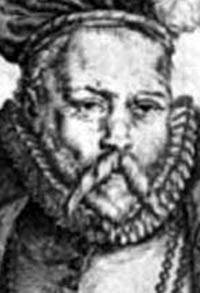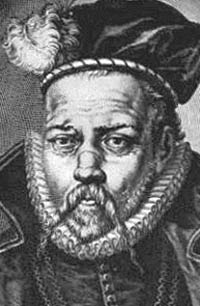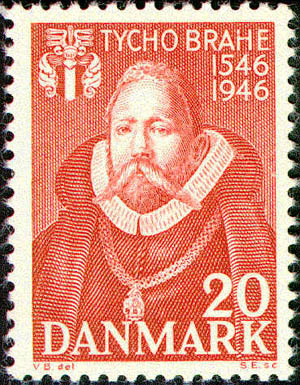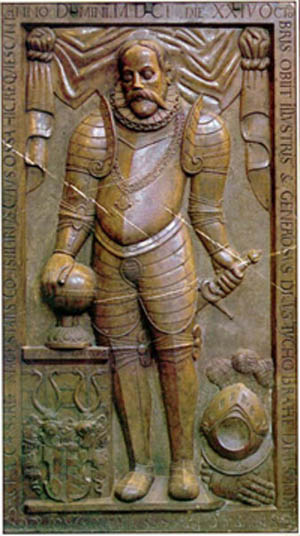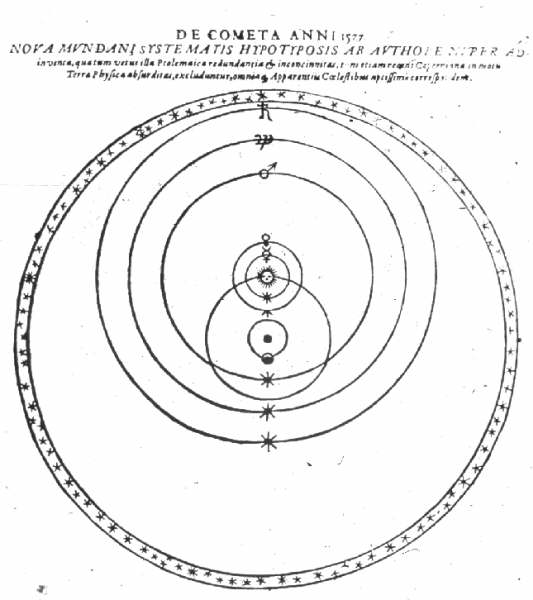Copyright Michael D. Robbins 2005
Astro-Rayological
Interpretation & Charts
Quotes
Biography
Images Physiognomic Interpretation
“Now it is quite clear to me that there are no solid spheres in the heavens, and those that have been devised by the authors to save the appearances, exist only in the imagination.”
“And when statesman or others worry [the scientist] too much, then he should leave with his possessions.”
“I conclude, therefore, that this star is not some kind of comet or a fiery meteor. . . but that it is a star shining in the firmament itself one that has never previously been seen before our time, in any age since the beginning of the world.”
“When, according to habit, I was contemplating the stars in a clear sky, I noticed a new and unusual star, surpassing the other stars in brilliancy . . . . There had never before been any star in that place in the sky.”
“With a firm and steadfast mind one should hold under all conditions, that everywhere the earth is below and the sky above, and to the energetic man, every region is his fatherland.”
The first great optical observer. His primary contributions to astrophysics were the design and development of observing instruments and the precise data he collected on the motions of the celestial bodies. His data were accurate to within roughly 1 to 2 arc minutes. Before his time, the accuracy was on the order of 15 arc minutes. (Comment--A simple thing which Tycho did which greatly improved his accuracy was to make several measurments of quantities and to then average his results in order to arrive at his final answer. This is standard practice today, but was highly unusual during Tycho's time.) Further, in contrast to earlier observers, Tycho observed objects throughout their cycles rather only at particular times, such as opposition and quadrature.
The data were complete and accurate enough to allow people to rule out theories of the motions of the celestial bodies. The result of his (and other people's) studies was to show that neither the Ptolemaic nor the Copernican models were acceptable. Both models were not consistent with the data!!!
This was the first step toward the development of an understanding of the Solar System.
Tycho Brahe (December 14, 1546 Knudstrup, Denmark – October 24, 1601 Prague, Bohemia (now Czech Republic)) was a Danish nobleman, well known as an astronomer/astrologer (the two were not yet distinct) and alchemist. He had Uraniborg built, which became an early "research institute". For purposes of publication, he owned a printing press and paper mill. His best known assistant was Johannes Kepler.
He is universally referred to as "Tycho" rather than by his surname "Brahe". Apparently his contemporaries did so and the usage has persisted.
Tycho Brahe was born Tyge Brahe, adopting the Latinised form Tycho at around age fifteen (sometimes written Tÿcho). He was born at his family's ancestral seat of Knudstrup Castle, Denmark to Otte Brahe and Beate Bille. His twin brother was stillborn (Tycho wrote a Latin ode (Wittendorf 1994, p. 68) to his dead twin which was printed as his first publication in 1572). He also had two sisters, one older (Kirstine Brahe) and one younger (Sophie Brahe). Otte Brahe, Tycho's father, a nobleman, was an important figure in the Danish King's court. Beate Bille, Tycho's mother, also came from an important family which had produced leading churchmen and politicians.
Tycho later wrote that when he was around two, his uncle, Danish nobleman Jørgen Brahe, ... without the knowledge of my parents took me away with him while I was in my earliest youth. Apparently this did not lead to any disputes nor did his parents attempt to get him back. Tycho lived with his childless uncle and aunt, Jørgen Brahe and Inger Oxe, in the Tostrup Castle until he was six years old. Around 1552 his uncle was given the command of Vordingborg Castle to which they moved, and where Tycho began a Latin education until he was 12 years old.
On April 19, 1559 Tycho began his studies at the University of Copenhagen. There, following the wishes of his uncle, he studied law but also studied a variety of other subjects and became interested in astronomy. It was, however, the eclipse which occurred on August 21, 1560, particularly the fact that it had been predicted, that so impressed him that he began to make his own studies of astronomy helped by some of the professors. He purchased an ephemeris and books such as Sacrobosco's Tractatus de Sphaera, Apianus' Cosmographia seu descriptio totius orbis and Regiomontanus' De triangulis omnimodis.
I've studied all available charts of the planets and stars and none of them match the others. There are just as many measurements and methods as there are astronomers and all of them disagree. What's needed is a long term project with the aim of mapping the heavens conducted from a single location over a period of several years. -Tycho Brahe, 1563 (age 17).
Tycho realized that progress in the science of astronomy could be achieved not by occasional haphazard observations, but only by systematic and rigorous observation, night after night, and by using instruments of the highest accuracy obtainable. He was able to improve and enlarge the existing instruments, and construct entirely new ones. Tycho's naked eye measurements of planetary parallax were accurate to the arcminute. (These measurements became the possessions of Kepler following Tycho's death.)
While a student, Tycho lost part of his nose in a duel with broadswords with Manderup Parsbjerg, a fellow Danish nobleman. This occurred in the Christmas season of 1566, after a fair amount of drinking, while the just turned 20-year-old Tycho was studying at the University of Rostock in Germany. Attending a dance at a professor's house, he quarrelled with Parsbjerg. A subsequent duel (in the dark) resulted in Tycho losing the bridge of his nose. A consequence of this was that Tycho developed an interest in medicine and alchemy. For the rest of his life, he was said to have worn a replacement made of silver and gold. Tycho's tomb was reopened in 1901 and his remains were examined by medical experts. The nasal opening of the skull was rimmed with green, a sign of exposure to copper, not silver or gold.
His foster father, uncle Jorgen Brahe, had already died in 1565 of pneumonia after rescuing Frederick II of Denmark from drowning. In April 1567 Tycho returned home from his travels, where his father wanted him to take up law, but was allowed to make trips to Rostock, then on to Augsburg, where he built a great quadrant, Basel, and Freiburg. He was informed about his father's illness at the end of 1570, so he returned to Knudstrup, where his father died in May 1571. Soon after, his other uncle Steen Bille helped him build an observatory and alchemical laboratory at Herrevad Abbey.
In 1572 in Knudstrup Tycho fell in love with Kirsten Jørgensdatter who was a commoner, her father, Pastor Jorgen Hansen, being the Lutheran clergyman of Knudstrup's village church. Under Danish law, when a nobleman and a commoner woman lived together openly as husband and wife, and she wore the keys to the household at her belt like any true wife, their alliance became a binding morganatic marriage after three years. The husband retained his noble status and privileges; the wife remained a commoner. Their children were legitimate in the eyes of the law, but they were commoners like their mother and could not inherit their father's name, coat of arms, or landed property. (Skautrup 1941, pp. 24-5)
Kirsten Jørgensdatter gave birth to their daughter, Kirstine (named after Tycho's late sister who died at 13) on October 12, 1573.
On November 11, 1572, Tycho observed (from Herrevad Abbey) a very bright star which unexpectedly appeared in the constellation Cassiopeia. Since it had been maintained since antiquity that the world of the fixed stars was eternal and unchangeable (a fundamental axiom of the Aristotelian world view, celestial immutability), other observers held that the phenomenon was something in the Earth's atmosphere. Tycho, however, observed that the parallax of the object did not change from night to night, suggesting that the object was far away. Tycho argued that a nearby object should appear to shift its position with respect to the background. He published a small book, De Stella Nova (1573), thereby coining the term nova for a "new" star. (We now know that Tycho's star was a supernova.) This discovery was decisive for his choice of astronomy as a profession. Tycho was strongly critical of those who dismissed the implications of the astronomical appearance, writing in the preface to De Stella Nova: "O crassa ingenia. O caecos coeli spectatores." ("Oh thick wits. Oh blind watchers of the sky.")
Tycho's discovery was the inspiration for Edgar Allan Poe's poem, "Al Aaraaf".
Kepler tried, but was unable, to persuade Brahe to adopt the heliocentric model of the solar system. Tycho believed in a modified geocentric model known as the Tychonian system, for the same reasons that he argued that the supernova of 1572 was not near the Earth. He argued that if the Earth were in motion, then nearby stars should appear to shift their positions with respect to background stars. In fact, this effect of parallax does exist; it could not be observed with the naked eye, or even with the telescopes of the next two hundred years, because even the nearest stars are much more distant than most astronomers of the time believed possible.
King Frederick II of Denmark and Norway, impressed with Tycho's 1572 observations, financed the construction of two observatories for Tycho on the island of Hven in Copenhagen Sound. These were Uraniborg and Stjerneborg. Uraniborg also had a laboratory for Brahe's alchemical experiments.
Because Tycho disagreed with Christian IV, the new king of his country, he moved to Prague in 1599. Sponsored by Rudolf II, the Holy Roman Emperor, he built a new observatory (in a castle in Benátky nad Jizerou 50 km away from Prague) and worked there until his death.
In return for their support, Tycho's duties included preparing astrological charts and predictions for his patrons on events such as births; weather forecasting; and astrological interpretations of significant astronomical events such as the comet of 1577 and the supernova of 1572.
Tycho was the preeminent observational astronomer of the pre-telescopic period, and his observations of stellar and planetary positions achieved unparalleled accuracy for their time. For example Brahe measured Earth's axial tilt as 23 degrees and 31.5 minutes, which he claimed to be more acurate than Copernicus by 3.5 minutes. After his death, his records of the motion of the planet Mars enabled Kepler to discover the laws of planetary motion, which provided powerful support for the Copernican heliocentric theory of the solar system.
Tycho himself was not a Copernican, but proposed a system in which the planets other than Earth orbited the Sun while the Sun orbited the Earth. His system provided a safe position for astronomers who were dissatisfied with older models but were reluctant to accept the Earth's motion. It gained a considerable following after 1616 when Rome decided officially that the heliocentric model was contrary to both philosophy and Scripture, and could be discussed only as a computational convenience that had no connection to fact.
He was aware that a star observed near the horizon appears with a greater altitude than the real one, due to atmospheric refraction, and he worked out tables for the correction of this source of error.
To perform the huge number of products needed to produce much of his astronomical data, Brahe relied heavily on the then-new technique of prosthaphaeresis, an algorithm for approximating products based on trigonometric identities that predated logarithms.
Like the fifteenth century astronomer Regiomontanus, Tycho Brahe appears to have accepted astrological prognostications on the principle that the heavenly bodies undoubtedly influenced (yet did not determine) terrestrial events, but expressed skepticism about the multiplicity of interpretative schemes, and increasingly preferred to work on establishing a sound mathematical astronomy. Two early tracts, one entitled Against Astrologers for Astrology, and one on a new method of dividing the sky into astrological houses, were never published and are unfortunately now lost.
Tycho also worked in the area of weather prediction, produced astrological interpretations of the supernova of 1572 and the comet of 1577, and furnished his patrons Frederick II and Rudolph II with nativities and other predictions (thereby strengthening the ties between patron and client by demonstrating value.) An astrological worldview was fundamental to Tycho's entire philosophy of nature. His interest in alchemy, particularly the medical alchemy associated with Paracelsus, was almost as long-standing as his study of astrology and astronomy simultaneously, and Uraniborg was constructed as both observatory and laboratory.
In an introductory oration to the course of lectures he gave in Copenhagen in 1574, Tycho defended astrology on the grounds of correspondences between the heavenly bodies, terrestrial substances (metals, stones etc.), and bodily organs. He was later to emphasise the importance of studying alchemy and astrology together with a pair of emblems bearing the mottoes: Despiciendo suspicio - "By looking down I see upward" and Suspiciendo despicio - "By looking up I see downward." As several scholars have now argued, Tycho's commitment to a relationship between macrocosm and microcosm even played a role in his rejection of Copernicanism and his construction of a third world-system.
Tycho often held large social gatherings in his castle, as he was a member of the nobility. He was said to own 1% of the entire wealth of Denmark at one point in the 1580s. Pierre Gassendi wrote that Tycho also had a tame elk, and that his mentor the Landgraf Wilhelm of Hesse-Kassel asked about an animal faster than a deer. Tycho replied writing there were none, but he could send his tame elk. When Wilhelm replied he would accept one in exchange for a horse, Tycho replied with the sad news that the elk/moose just died on a visit to entertain a nobleman at Landskrona. Apparently during dinner the elk had drunk a lot of beer and fell down the stairs, and died.
Brahe died in 1601, several days after straining his bladder during a banquet. It has been said that to leave the banquet before it concluded, would be the height of bad manners and so he remained. His weakened state allowed an infection to invade his body and lead ultimately to his death.
However, recent investigations have suggested that Tycho did not die from urinary problems but most likely from mercury poisoning: toxic levels of it have been found in his hair and hair-roots. Tycho may have poisoned himself unintentionally by imbibing some mercury-containing medicine.3 Some have even speculated that Tycho may have been murdered, though there is no solid evidence for this.
Tyge (Latinized as Tycho) Brahe was born on 14 December 1546 in Skane, then in Denmark, now in Sweden. He was the eldest son of Otto Brahe and Beatte Bille, both from families in the high nobility of Denmark. He was brought up by his paternal uncle Jörgen Brahe and became his heir. He attended the universities of Copenhagen and Leipzig, and then traveled through the German region, studying further at the universities of Wittenberg, Rostock, and Basel. During this period his interest in alchemy and astronomy was aroused, and he bought several astronomical instruments. In a duel with another student, in Wittenberg in 1566, Tycho lost part of his nose. For the rest of his life he wore a metal insert over the missing part. He returned to Denmark in 1570.
In 1572 Tycho observed the new star in Cassiopeia and published a brief tract about it the following year. In 1574 he gave a course of lectures on astronomy at the University of Copenhagen. He was now convinced that the improvement of astronomy hinged on accurate observations. After another tour of Germany, where he visited astronomers, Tycho accepted an offer from the King Frederick II to fund an observatory. He was given the little island of Hven in the Sont near Copenhagen, and there he built his observatory, Uraniburg, which became the finest observatory in Europe.
Tycho designed and built new instruments, calibrated them, and instituted nightly observations. He also ran his own printing press. The observatory was visited by many scholars, and Tycho trained a generation of young astronomers there in the art of observing. After a falling out with King Christian IV, Tycho packed up his instruments and books in 1597 and left Denmark. After traveling several years, he settled in Prague in 1599 as the Imperial Mathematician at the court of Emperor Rudolph II. He died there in 1601. His instruments were stored and eventually lost.
Tycho Brahe's contributions to astronomy were enormous. He not only designed and built instruments, he also calibrated them and checked their accuracy periodically. He thus revolutionized astronomical instrumentation. He also changed observational practice profoundly. Whereas earlier astronomers had been content to observe the positions of planets and the Moon at certain important points of their orbits (e.g., opposition, quadrature, station), Tycho and his cast of assistants observed these bodies throughout their orbits. As a result, a number of orbital anomalies never before noticed were made explicit by Tycho. Without these complete series of observations of unprecedented accuracy, Kepler could not have discovered that planets move in elliptical orbits. Tycho was also the first astronomer to make corrections for atmospheric refraction. In general, whereas previous astronomers made observations accurate to perhaps 15 arc minutes, those of Tycho were accurate to perhaps 2 arc minutes, and it has been shown that his best observations were accurate to about half an arc minute.
Tycho's observations of the new star of 1572 and comet of 1577, and his publications on these phenomena, were instrumental in establishing the fact that these bodies were above the Moon and that therefore the heavens were not immutable as Aristotle had argued and philosophers still believed. The heavens were changeable and therefore the Aristotelian division between the heavenly and earthly regions came under attack (see, for instance, Galileo's Dialogue) and was eventually dropped. Further, if comets were in the heavens, they moved through the heavens. Up to now it had been believed that planets were carried on material spheres (spherical shells) that fit tightly around each other. Tycho's observations showed that this arrangement was impossible because comets moved through these spheres. Celestial spheres faded out of existence between 1575 and 1625.
If Tycho destroyed the dichotomy between the corrupt and ever changing sublunary world and the perfect and immutable heavens, then the new universe was clearly more hospitable for the heliocentric planetary arrangement proposed by Nicholas Copernicus in 1543. Was Tycho therefore a follower of Copernicus? He was not. Tycho gave various reasons for not accepting the heliocentric theory, but it appears that he could not abandon Aristotelian physics which is predicated on an absolute notion of place. Heavy bodies fall to their natural place, the Earth, which is the center of the universe. If the Earth were not the center of the universe, physics, as it was then known, was utterly undermined. On the other hand, the Copernican system had a number of advantages, some technical (such as a better lunar theory and smaller epicycles), and others more based on harmony (an obvious explanation of retrograde planetary motion, a strict demonstration of the order and heliocentric distances of the planets). Tycho developed a system that combined the best of both worlds. He kept the Earth in the center of the universe, so that he could retain Aristotelian physics (the only physics available). The Moon and Sun revolved about the Earth, and the shell of the fixed stars was centered on the Earth. But Mercury, Venus, Mars, Jupiter, and Saturn revolved about the Sun. He put the (circular) path of the comet of 1577 between Venus and Mars. This Tychonic world system became popular early in the seventeenth century among those who felt forced to reject the Ptolemaic arrangement of the planets (in which the Earth was the center of all motions) but who, for various reasons, could not accept the Copernican alternative.
Tycho Brahe was given the name Tyge by his parents Beate Bille and Otte Brahe. He is now known as "Tycho" since that is the Latinised version of his name that he adopted when he was about fifteen years old. For simplicity we shall use the name Tycho throughout this biography. Otte Brahe, Tycho's father, was from the Danish nobility and was an important man among the Danish King's closest group of supporters. Beate Bille, Tycho's mother, also came from an important family which had produced leading churchmen and politicians. Tycho was one of twin sons, but his twin died shortly after birth. His parents had one older daughter but Tycho was their eldest son.
A strange episode occurred when Tycho was two years old. His uncle, Jorgen Brahe (in Tycho's own words, see for example [5]):- ... without the knowledge of my parents took me away with him while I was in my earliest youth.
It was a strange episode since it did not appear to cause any family disputes nor did his parents try to take him back. Jorgen Brahe and his wife Inger Oxe had no children of their own, and they acted as foster parents to Tycho until Jorgen's death. Jorgen Brahe, like his brother Otte Brahe, was a leading Danish noble while Inger Oxe was the sister of Peder Oxe who was a member of the Rigsraads, the governing council consisting of 20 advisors to the King. In fact Tycho benefited most on the educational side from his foster mother Inger Oxe who had scholarly interests as did other members of her family, while the Brahes and the Billes had little time for scholarly pursuits.
Jorgen Brahe commanded Tostrup Castle, and it was in that castle that Tycho lived from the time he was taken by Jorgen until he was six years old. We should not give the impression that he did not travel during this time, for his parents had many administrative duties which took them away and it is likely that Tycho sometimes went with one of them. In 1552 Jorgen was given the command of Vordingborg Castle, which was a promotion to a more important role. About a year after Tycho moved to Vordingborg with his foster parents he began to attend school, almost certainly attending that attached to the local cathedral. Although Tycho's father Otte considered learning Latin a waste of time, his foster parents were much keener that he should receive this type of education. Tycho attended this school until he was twelve years old, then began his university studies.
On 19 April 1559 Tycho began his studies at the University of Copenhagen. There, following the wishes of his uncle, he studied law but also studied a variety of other subjects and became interested in astronomy. It was, however, the eclipse which occurred on 21 August 1560, particularly the fact that it had been predicted, that so impressed him that he began to make his own studies of astronomy helped by some of the professors. He purchased an ephemeris and books such as Sacrobosco's Tractatus de Sphaera, Apianus' Cosmographia seu descriptio totius orbis and Regiomontanus' De triangulis omnimodis.
His foster parents decided that he should gain experience abroad and in February 1562 he set off with a travelling companion to go to the University of Leipzig. Astronomy was not officially part of his studies, these were classical languages and culture, but he had bought his astronomy books with him together with Dürer's constellation maps. He began making observations and by August 1563, while still at the University of Leipzig, he began to keep a record of these observations. The second observation he recorded was a conjunction of Jupiter and Saturn which proved significant for Tycho's subsequent career. Neither tables based on Copernicus nor on Ptolemy gave the correct date for the conjunction, Ptolemy's being out by nearly a month and even Copernicus' being out by days. Tycho, with the confidence of someone not yet seventeen, thought he could do better - and he later proved himself to be right!
Tycho now studied astronomy with Bartholomew Schultz at Leipzig who taught him some tricks to obtain more accurate observations. He knew that accurate observations required good instruments and he began to acquire them. Tycho returned home in May 1565 and in the following month his uncle Jorgen gave his life in rescuing the King. His father, who now commanded Helsingborg Castle, and mother assumed responsibility for the young man who was still under eighteen. In 1566 he was off on his travels again, visiting first the university in Wittenberg and then that in Rostock. While in Rostock he was involved in an argument with another Danish student and in the resulting duel Tycho had part of his nose cut off. A consequence of this was that Tycho developed an interest in medicine and alchemy.
After his return home in April 1567 he had an artificial nose made from silver and gold. He was, however, disfigured for life and his portraits show the disfigurement which was almost certainly worse than what the artists portrayed. Tycho's father was keen that he should quickly take up a political career but somehow Tycho persuaded his father to let him make another trip abroad. He first revisited Rostock, then went to Basel, Freiburg, and Augsburg. Tycho had been working on improved instruments for observing for a while, but when in Augsburg he designed some of his own and managed to obtain a patron to underwrite the cost of a major new instrument. In about a month he had a huge quadrant constructed and erected in the estate of his patron outside the city. It was very accurate but was so massive that it required many servants to align it so only one observation could be made each night. Peter Ramus was also on a visit to Germany and while in Augsburg he learnt of Tycho's great quadrant leading to meetings at which the two engaged in deep astronomical discussions. Tycho began constructing another instrument, this time a large celestial globe made from wood.
Receiving word that his father was ill, Tycho returned home during the last few days of 1570. His father died in May 1571 and soon after, with the help of his uncle Steen Bille, Tycho began constructing an observatory in Herrevad Abbey. They also built an alchemy laboratory there since alchemy was becoming a major interest for Tycho. In 1572 he met Kirsten Jorgensdatter, a girl from his home town of Knudstrup, but since she was a commoner and he was a noble, they could not marry legally. Kirsten lived with him, however, as his common law wife. The year 1572 was significant for Tycho in another way as described by Field [15]:-
On 11 November 1572, he emerged into the dark of the early evening, after a long stint of alchemical experimentation, and his first glance at the sky showed him an extra star in the constellation of Cassiopeia, almost directly overhead. He instantly summoned his chemical assistant to confirm that the star really was there. He was not the first to see the new star (a supernova) but his observations of it (published in 1574) did much to prove beyond reasonable doubt that the star really belonged to the firmament and was not merely a local phenomenon in the sublunary world (as comets were generally believed to be). The star is now usually known as 'Tycho's supernova'. It turned Tycho's interest back to astronomy.
Beginning in September 1574 Tycho lectured on astronomy at the University of Copenhagen but gave up in the following spring when he received an annual income from his father's estate. He set off on another trip abroad, first visiting Kassel. The Landgraf Wilhelm IV of Hessen-Kassel had founded an observatory at Kassel about 15 years earlier and Tycho was very impressed by the methods used there. The design of his own observatory would be influenced by that at Kassel and Tycho corresponded frequently with the Landgraf; see [21] for more details of their relationship and correspondence.
Leaving Kassel, Tycho visited Frankfurt, Basel and finally Venice before returning to Denmark by the end of 1575. By this time he had made a decision to leave Denmark and to settle in Basel, but King Frederick of Denmark was not going to lose his most eminent scientist easily so he made offers to Tycho to entice him to set up an observatory in Denmark. After some offers which Tycho did not find attractive, the King offered Tycho the island of Hven (called today Ven) [15]:-
With financial help from the King of Denmark, he went on to set up a purpose-built observatory, on the island of Hven in Copenhagen Sound. The observatory, called Uraniborg, was equipped with exceptionally large and accurate instruments (and with an alchemical laboratory in its basement). At Uraniborg Tycho made twenty years' worth of astronomical observations.
Here is Tycho's drawing of the main building at Uraniborg, taken from his Astronomiae instauratae mechanica (1598). Here is his plan of the gardens, from the same work, with the main building in the centre and servants' quarters, a printing studio, and other buildings just inside the outer walls. We should note that Tycho's design was influenced by buildings he had seen in Venice, and was also constructed in a highly geometrical form.
One of the most exciting astronomical events which Tycho observed from Uraniborg was a comet which he first spotted on 13 November 1577. He published his account in De mundi aetherei recentioribus phaenomenis (1588) where he draws cosmological conclusions from the fact that his measurements show that the comet is not closer to Earth than the Moon, contradicting Aristotle's model of the cosmos. From his observations Tycho was able to show that the comet was certainly further away than Venus.
In 1584, with the observatory of Uraniborg now too small to house all his instruments, Tycho built a second one named Stjerneborg adjacent to Uraniborg. This was the time when Tycho was most active in producing major new instruments. Thoren writes [32]:-
Because of the number and variety of instruments made and described by Tycho, previous commentators have assumed that he made instruments for the sheer sake of keeping his instrument-makers busy. In fact, however, their construction can be traced in his logs and rationalized as several series of experiments which only produced his major instruments in the mid-1580's. The ten-year process had considerable consequences for progress of Tycho's theoretical work during his life. It has also obscured historical understanding of the accuracy of his instruments.
Tycho's marvellous agreement between the description and practice of observations.
Wesley, in [38] and [39], makes a careful study of the accuracy of Tycho's observations. Swerdlow, reviewing 38] writes:-
The results of the study are interesting, and speak well for the accuracy of Tycho's instruments. Those tested are the mural quadrant, revolving wooden quadrant, revolving steel quadrant, astronomical sextant, and equatorial armillary, the last measuring declinations directly. Aside from occasional periods when one or another instrument was distinctly out of adjustment - as, by the way, only a study of this kind can show - the observations have errors falling mostly between about 0.5' and 1.0', that is, about the accuracy of the standard used for comparison. Thus, as was also the case in the earlier study of fixed stars, Kepler's belief that Tycho's observations could be trusted to better than two minutes is amply confirmed.Among his many discoveries Tycho found that the obliquity of the ecliptic had decreased since the time of Ptolemy but, as explained in [24], he obtained an incorrect value due to errors by Ptolemy.
Tycho is perhaps best known today for his theory of the solar system which is based on a stationary Earth round which the Moon and Sun revolve. The other planets, according to Tycho's theory, revolve round the Sun. In fact in his younger days Tycho had been convinced by Copernicus' Sun centred model but his firm belief that theory must be supported by experimental evidence led him away. The problem was, of course, that in the Sun centred model of Copernicus a parallax shift should be observed but despite his attempts to measure such a shift, Tycho could detect none. There were two possibilities to explain this: either the Earth was fixed, or the scale of the universe was unbelievably large. We know today that it is the second of these which is true, and that the scale is such that Tycho would have had no hope in measuring parallax with his instruments. The first measurement of the parallax of a star was in 1838 by Bessel who found 0.3" for the parallax of 61 Cygni. Despite the quality of Tycho's measurements, this value in about 100 times smaller that Tycho's observational errors. In fact Tycho was not the first to propose the Earth centred model with the planets rotating round the Sun for Erasmus Reinhold had done so a few years earlier. However Rosen in [26] argues convincingly that Tycho did not know of Reinhold's theory.
King Frederick died in April 1588 and, his son Christian (who became King Christian IV) still being a child, a regent was appointed. Support for Tycho continued however, and he presented a scheme to the Rigsraads to allow his children to inherit Uraniborg. Six of his eight children had lived. He had two sons; Tycho, born in 1581, and Georg in 1583. He also had four daughters; Kirsten born in 1573, Magdalene in 1574, Elizabeth in 1579, and Cecilie in 1582. Because Kirsten was Tycho's common law wife, their children could not inherit. Tycho, however, presented a patent which gave Uraniborg something like university status, and the director something like the status of the head of a university. It also stated that succession to the headship would give preference to "Tycho Brahe's own". Perhaps surprisingly, since the state was attempting to stop the acceptance of common law wives, Tycho's patent was accepted, a sure sign of the high esteem in which he was held (and perhaps also due to many family and friends being on the Rigsraads).
In his younger days Tycho had been a fair man in his dealings with others. Although he had treated the inhabitants of Hven badly by modern standards, and also in their eyes, it was usual for a lord at this time to treat his subjects harshly. However in the 1590s Tycho's nature seemed to change and his treatment both of the inhabitants of Hven and of his student helpers at Uraniborg became unreasonable. He always thought a lot of himself and perhaps by this stage his view of his own importance (he saw himself as the natural successor to Hipparchus and Ptolemy, a far more important person than a King) had rather turned his head. Negotiations over the marriage of his daughter Magdalene to Gellius, who had been an assistant at Uraniborg for five years, fell apart and caused Tycho extreme grief and family upset. He fell out with the young King Christian by not repairing the Chapel of the Magi at Roskilde, where Christian's father Frederick was buried, despite it being on an estate which provided Tycho with a substantial income. Christian made it clear that the promise Tycho had been given that Uraniborg would continue under the direction of his children no longer held.
Tycho closed down his observatory on Hven in 1597 (the last recorded observation is on 15 March that year), and moved to Copenhagen. However, things did not go well for him there and he left Denmark with his family and his instruments to seek support and find somewhere to continue his work [15]:-
In 1599 he was appointed Imperial Mathematician to the Holy Roman Emperor, Rudolph II, in Prague (then the capital of the Holy Roman Empire). Johannes Kepler joined him as an assistant, to help with mathematical calculations. Tycho intended that this work should prove the truth of his cosmological model, in which the Earth (with the Moon in orbit around it) was at rest in the centre of the Universe and the Sun went round the Earth (all other planets being in orbit about the Sun and thus carried round with it).
Tycho began observing again in Prague. He received support from Rudolph for Kepler and himself to compile a new set of astronomical tables based on Tycho's recorded observations over 38 years. These would be called the Rudolphine Tables as a tribute to their sponsor. However, Tycho died eleven days after dining at the palace of Peter Vok Ursinus Rozmberk as a result of adhering to the etiquette of the day and refusing to leave the dinner table before his host. Kepler describes his death (see for example [5]):-
Holding his urine longer than was his habit, Brahe remained seated. Although he drank a little overgenerously and experienced pressure on his bladder, he felt less concerned for his state of health than for etiquette. By the time he returned home he could not urinate any more. Finally, with the most excruciating pain, he barely passed some urine, but yet it was blocked. Uninterrupted insomnia followed; intestinal fever; and little by little delirium. ... During his last night, through the delirium in which everything was very pleasant, like a composer creating a song, Brahe these words over and over again: "Let me not seem to have lived in vain."
Field writes [15]:-
When Tycho died, Kepler succeeded him as Imperial Mathematician. Tycho's observations of planetary positions, which were made using instruments with open sights (a telescope was not used for astronomy until about 1609), were much more accurate than any made by his predecessors. They allowed Kepler, who (unlike Tycho) was a convinced follower of Copernicus, to deduce his three laws of planetary motion (1609, 1619) and to construct astronomical tables, the Rudolphine Tables (Ulm, 1627), whose enduring accuracy did much to persuade astronomers of the correctness of the Copernican theory. However, until at least the mid-seventeenth century, Tycho's model of the planetary system was that favoured by most astronomers. It had the advantage of avoiding the problems introduced by ascribing motion to the Earth.
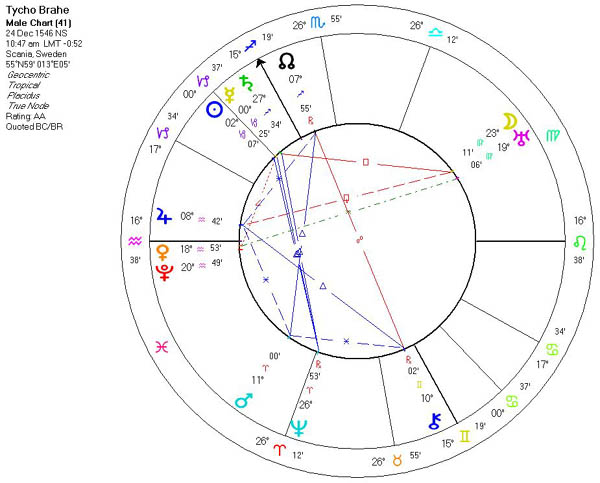
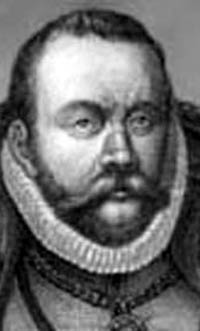
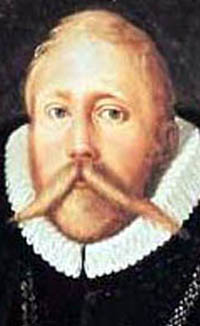 x
x